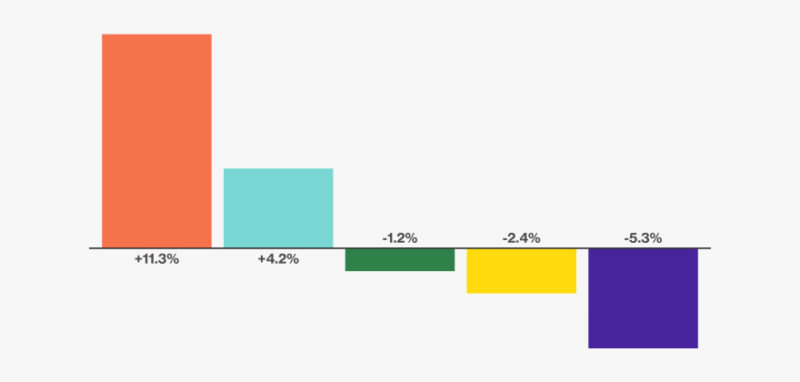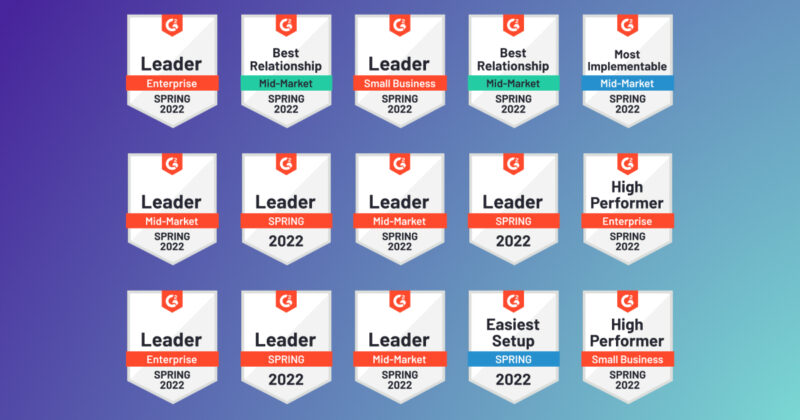
State of Tech Salaries in 2021: New Data and New Salary Calculator Tool
Today, Hired, the leading AI-driven hiring marketplace matching tech and sales talent with top companies, released its report, Hiring in the Great Resignation: 2021 State of Tech Salaries. This annual report uncovers the impact on tech salaries across different industries, markets, and roles by the shift to remote work. It also includes a newly updated Salary Calculator tool.
Hired’s findings are based on marketplace data from more than 525K interview requests and 10K job offers facilitated through its platform from January 2019 to June 2021. It also integrates survey results from more than 1,200 tech employees revealing insights on compensation, benefits, and remote work trends.
This combined analysis provides excellent guidance for companies navigating evolving candidate preferences during the “Great Resignation.”
Here are a few of the insights from the State of Tech Salaries 2021 report:
Tech talent salaries grew almost everywhereMost cities saw an increase in overall tech salaries, including a 5% increase in average remote salaries from 2020 to 2021. Exceptions included San Francisco and New York City from 2020 to 2021 due to increased demand for junior talent. Seasoned tech pros, with 2+ years of experience, on the other hand, saw increases across all markets.
Those in smaller markets (tier 2 and tier 3 in the 2021 State of Tech Salaries report) and in remote roles saw the largest increases. As demand grows, employers are moving faster too. In the U.S. companies are hiring within 30 days, (34 days in the U.K.), down 25% on average from a year ago.
“We’ve seen a 5x increase in roles open to remote employees on Hired’s marketplace since January of 2020,” said Hired CEO Josh Brenner. “Shifting to remote maximizes a company’s talent pipeline and helps meet the growing demand for talented and diverse tech talent.
We understand the ‘Great Resignation’ causes many challenges, but it’s also an incredible opportunity for both candidates and employers.
More than 90% of Hired candidates indicate a preference for remote work, meaning companies have access to some of the best talent on the market regardless of location. To be competitive, it’s crucial to offer the right benefits and be efficient in the hiring process.”
“We’ve seen a 5x increase in roles open to remote employees on Hired’s marketplace since January of 2020.”
Hired CEO Josh Brenner
When adjusting average salaries for cost of living, the average $165k salary in San Francisco translates to $243k in Dallas. Only Washington D.C. and New York City top San Francisco’s steep cost of living.
As more companies embrace a remote workforce, the migration from tech hubs may continue. For instance, net exits from San Francisco increased 649% from March 2020 to the end of the year, compared to the same period in 2019.
Flexible work options are a must to compete for tech talentMost tech workers want to work remotely to some degree. Hired’s data showed 52% favor a remote-first model with flexibility to go to an office. One third wishes to stay fully remote indefinitely. Only 1% would like to work in an office full-time.
If companies lower salaries for remote employees, turnover is likelyIf salaries were to decrease or if they were denied a raise in the next six months, 74% of remote tech workers said they would look for a new job. In addition, 35% expect salaries to increase up to 10% over the next half year.
This is a delicate area. Social scientists have found people experience greater disappointment when something is taken away, compared to the level of happiness when receiving something.
When speaking of laws of human behavior, Professor Adam Galinsky at Columbia Business School said, “Losses are more painful than gains are pleasurable. Cutting things always really has to be done with incredible levels of caution and care.”
Candidates consider more than base compensationBase salaries aren’t everything. 76% are willing to accept a lower base salary in exchange for other compensation, such as equity and flexible work options.
Hired’s data showed younger, less experienced tech workers value tuition reimbursement while more experienced pros preferred benefits such as childcare services and paid parental leave.
Openness around remote compensation and pay structures is a mustIt’s critical when engaging candidates and employees to offer transparency in tech salaries. While survey respondents had mixed opinions how to determine remote salaries, 45% disagree with using the cost of living of an employee’s location as a baseline.
Conclusion: The pandemic’s impact on the workplace can’t be underestimatedMany of the old rules have retired, and companies are finding their way to what works best for them, their employees, their stakeholders, and customers. Whether companies go back to the office fully, pivot to remote-first, or a hybrid, a lot is TBD.
Without question companies must be more proactive than ever to retain top talent and capitalize on the opportunities provided by the Great Resignation. Remote roles offer employers and talent opportunities to connect without expensive real estate needs.
It also offers opportunities to invest in other things such as new tools, professional development, and meaningful compensation. It’s a good day to revamp or refine hiring practices to be more equitable, efficient, and transparent.
Start nowClick to view the full report, “Hiring in the Great Resignation: State of Tech Salaries 2021.
Methodology
The 2021 State of Tech Salaries report is based on Hired’s proprietary data from real job offers on the platform from companies to tech professionals, collected and analyzed by Hired’s data science team.
For this report, we focused on tech talent in 21 markets, in addition to those working remotely. We also analyzed more than 525K interview requests and 10K job offers facilitated by our marketplace from January 2019 through June 2021. These included more than 17K participating companies and 180K job seekers.
An optional demographics survey collected age and race data from Hired candidates and used only for aggregated research purposes and not shared with Hired clients. Where numbers have been adjusted to reflect certain markets’ cost of living, we used data from the site Numbeo, which factors in rent and real estate prices, groceries, transportation, utilities, local taxes, and more.
In addition to our proprietary data, we collected survey responses from more than 1,200 tech professionals across the globe on the Hired platform. We sought to better understand how COVID-19 and the shift to remote or hybrid work impacted their salary expectations, preference for benefits and flexible work, overall career plans, and more.
About Hired
Hired is the largest AI-driven marketplace that matches tech and sales talent with the world’s most innovative companies. Backed by the world’s leading talent advisory and solutions company, The Adecco Group, Hired combines intelligent job matching with unbiased career counseling to help people find a job they love and reach their full potential.
By providing accurate, real-time information, access to equal opportunity, efficiency, and transparency, the Hired platform serves as the backbone for hiring managers, recruiters, and C-level executives to surface the best matching talent and build ambitious, diverse teams.
Hired is committed to building equity in the hiring process through a more representative talent pool, using diversity goals, customized assessments, and salary bias alerts to help remove unconscious bias when hiring. For more information, visit hired.com.
Related blog posts

Hired Expands to Help Companies Find Talent Worldwide as Demand for Remote Work Doubles
With over 60% of companies on the platform hiring remotely, Hired now connects them with qualified...

Hired Releases 2022 State of Software Engineers Data Report
Annual State of Software Engineers report shows remote salaries are up; Go is the most in-demand...

Hired Releases its 2022 State of Wage Inequality in the Tech Industry Data Report
The gender and race wage gap is narrowing, but access to opportunity and discrepancies in salaries...

Hired Releases “2021 List of Top Employers Winning Tech Talent”
AI-driven tech and sales career marketplace Hired ranked US and UK companies across equity,...

Hired 2022 Spring Product Releases Roundup
The Latest Product Features and Enhancements on the Hired Platform As always, the Hired...

Hired Earns More G2 2022 Best Software Awards
Award badges celebrate achievements overall as well as in Job Search Sites, Recruiting Automation,...
